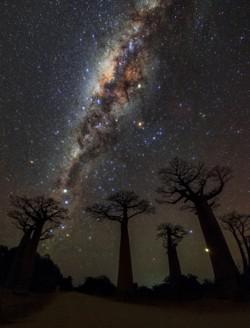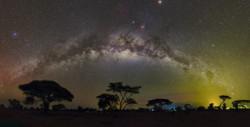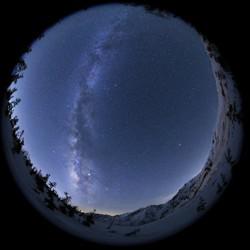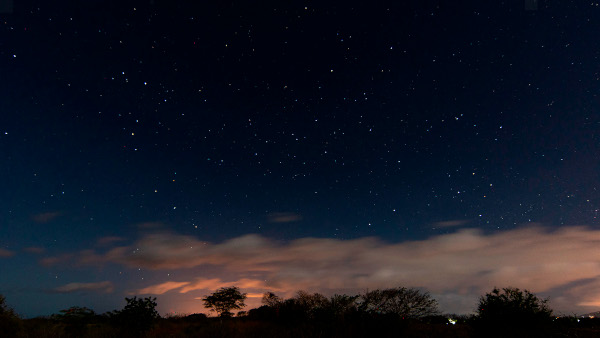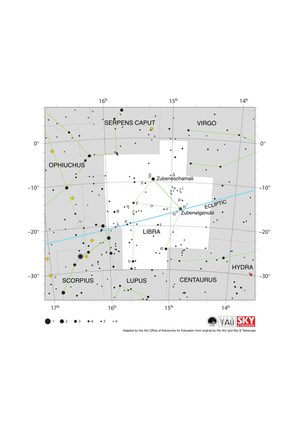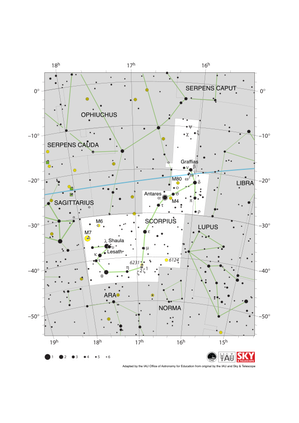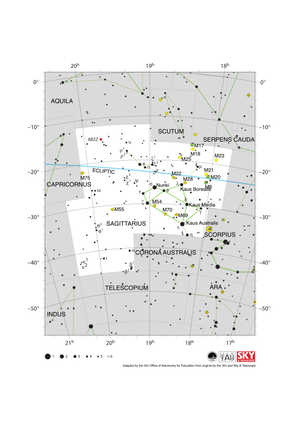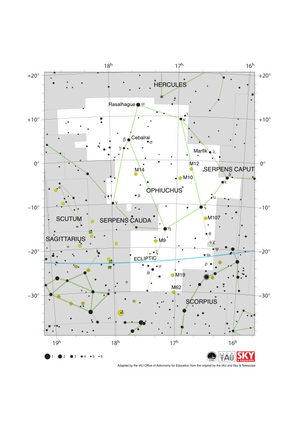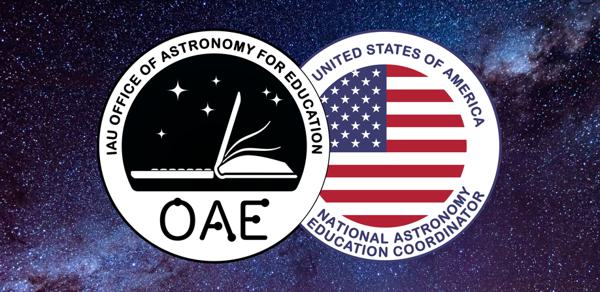Glossary term: Scorpius
Description: Scorpius (the Scorpion, commonly known as Scorpio) is one of the 13 constellations of the Zodiac. The stars that make up this constellation are in the part of the sky that intersects with the ecliptic (the plane defined by the Earth's path around the Sun). In fact, all the constellations that comprise the Zodiac intersect the ecliptic. From Earth, we can regularly find the Sun, and also the other planets of the Solar System, in the constellation Scorpius. It is one of the 88 constellations recognized by the International Astronomical Union. Scorpius was also one of the original 48 constellations identified by Ptolemy; it was identified by the Sumerians over a thousand years prior to him. Other cultures have different names for Scorpius: it is known as Maui’s Hook in Māori and Polynesian cultures, and Indigenous Australian groups like the Yolngu people of Arnhem Land identify Scorpius as both a crocodile and a scorpion. The brightest star in the constellation is Antares (known as alpha Scorpii), a red giant star around 550 light years from Earth.
Related Terms:
See this term in other languages
Term and definition status: This term and its definition have been approved by a research astronomer and a teacher
The OAE Multilingual Glossary is a project of the IAU Office of Astronomy for Education (OAE) in collaboration with the IAU Office of Astronomy Outreach (OAO). The terms and definitions were chosen, written and reviewed by a collective effort from the OAE, the OAE Centers and Nodes, the OAE National Astronomy Education Coordinators (NAECs) and other volunteers. You can find a full list of credits here. All glossary terms and their definitions are released under a Creative Commons CC BY-4.0 license and should be credited to "IAU OAE".
If you notice a factual error in this glossary definition then please get in touch.
Related Media
Milky Way over Avenue of Baobabs
Credit: Amirreza Kamkar/IAU OAE
License: CC-BY-4.0 Creative Commons Attribution 4.0 International (CC BY 4.0) icons
Drive
Credit: Marcin Zajac/IAU OAE
License: CC-BY-4.0 Creative Commons Attribution 4.0 International (CC BY 4.0) icons
Milky Way Arch over Amboseli National Park
Credit: Amirreza Kamkar/IAU OAE
License: CC-BY-4.0 Creative Commons Attribution 4.0 International (CC BY 4.0) icons
The Milky Way Across the Zenith
Credit: Ohnishi Kouji/IAU OAE
License: CC-BY-4.0 Creative Commons Attribution 4.0 International (CC BY 4.0) icons
Sky Over the Town of Nindirí, in Masaya, Nicaragua
Credit: René Antonio Urroz Álvarez/IAU OAE
License: CC-BY-4.0 Creative Commons Attribution 4.0 International (CC BY 4.0) icons
Related Diagrams
Libra Constellation Map
Credit: Adapted by the IAU Office of Astronomy for Education from the original by IAU/Sky & Telescope
License: CC-BY-4.0 Creative Commons Attribution 4.0 International (CC BY 4.0) icons
Scorpius Constellation Map
Credit: Adapted by the IAU Office of Astronomy for Education from the original by IAU/Sky & Telescope
License: CC-BY-4.0 Creative Commons Attribution 4.0 International (CC BY 4.0) icons
Sagittarius Constellation Map
Credit: Adapted by the IAU Office of Astronomy for Education from the original by IAU/Sky & Telescope
License: CC-BY-4.0 Creative Commons Attribution 4.0 International (CC BY 4.0) icons
Ophiuchus Constellation Map
Credit: Adapted by the IAU Office of Astronomy for Education from the original by IAU/Sky & Telescope
License: CC-BY-4.0 Creative Commons Attribution 4.0 International (CC BY 4.0) icons
Ara Constellation Map
Credit: Adapted by the IAU Office of Astronomy for Education from the original by IAU/Sky & Telescope
License: CC-BY-4.0 Creative Commons Attribution 4.0 International (CC BY 4.0) icons
